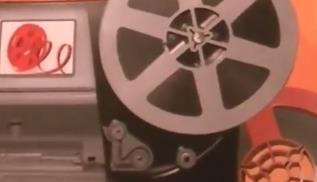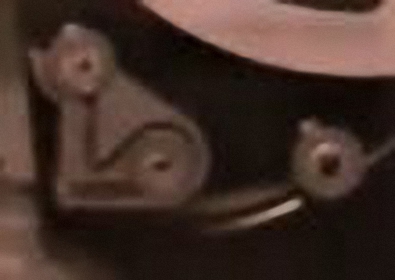|
Author
|
Topic: Somikon HD-XL Film Scanner & Digitizer (Super) 8mm - EU market
|
|
|
|
|
|
|
|
|
|
|
|
|
|
|
|
|
|
|
Werner Ruotsalainen
Film Handler
Posts: 97
From: Helsinki, Finland
Registered: Dec 2017
|
 posted December 16, 2017 12:00 PM
posted December 16, 2017 12:00 PM




Problems with (originally) Double films
Let me, as a newcomer, greet everybody! So far, I’ve been read-only (it’s based on the discussion in this topic that I ordered the Somikon); now that I have some thoughts to share, I decided to register.
I’ve shot over 120 Double-8 and some 6-7 Super 8 films in the eighties (family / travel). The Somikon worked just fine with the Super 8 films (AGFAColor) – it has never had any problems during scanning.
(Orignally) double-8 films, on the other hand, pose some major problems for the scanner. The sole reason for this is the inherently inprecise slitting of the originally 16mm material after development. (Something NOT present with Super-8 cartridges – hence my not having problems with my S8 footage at all in exactly the same scanner.) The scanner would just stick and immediately stop very-very frequently.
I’ve decided to investigate the problem. First, I’ve removed the plastic (and, for the actual scanning process, fully useless) “facade” from the projector as I thought it’s the film, which, in Normal8 mode, shifted backwards, touched by the facade that results in these problems. This didn’t help. However, at least this has helped in scanning a lot more N8 footage with the scanner as it let the gate-hatch be raised in an almost entirely vertically position, meaning it didn’t stay in the way of the camera module built into the bottom of the keypad. Then, by holding down the film in the right part of the gate with one finger and letting the oversized film occassionally leave the film track, I could scan significantly more than with the gate-hatch fully closed down:
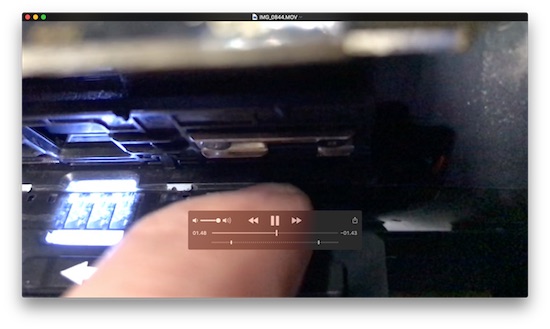
Nevertheless, the scanning has stopped every now and then in this case too.
The occassional softness caused by the film leaving the track in this case isn’t really an issue. In the scanned footage below, you can see this in effect at around 0:02, 00:05, 00:08 etc. (Note that I used fully zoomed out (w=0) to overscan the film because the particular camera, the Kodak Brownie 8mm Movie Camera II, also shot between the sprocket holes.)
YouTube link
Then, after contemplating getting a laser cutter to cut the film itself, I decided to remove the film track for possible adjustment. To do this, you need to remove the four screws I’ve annotated in this shot with four arrows:
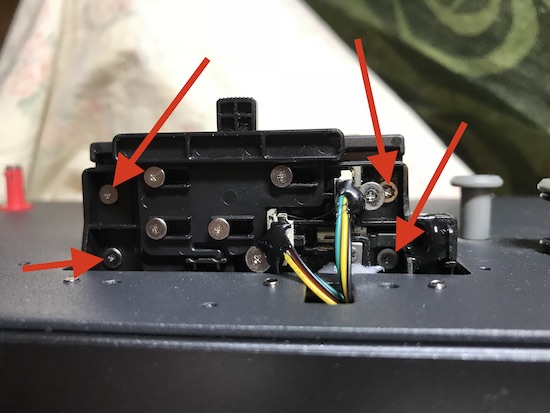
Fortunately, unscrewing these screws doesn’t necessiate the removal of the entire mechanical assembly first – just removing the plastic facade will be sufficient.
The film track is, unfortunately, a one-piece (meaning no width microadjustment is possible), plastic thing (with the opened gate-hatch):

And this is from the side, this time, with a caliper showing the exact width (8.05mm) of the film track:
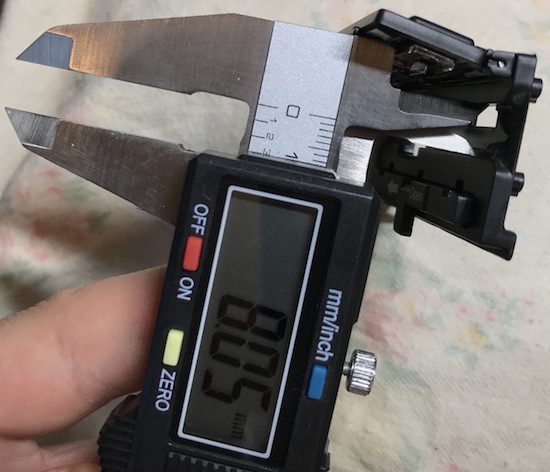
Another shot of the track, now, from the side, annotating the, in this shot, left side of the track:
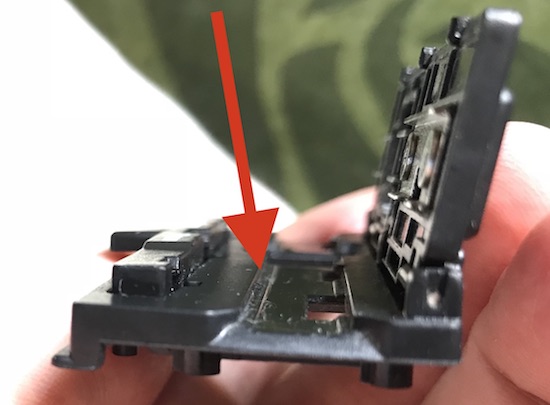
For my D8 films, the ideal width would be around 8.25mm, my films’ (I’ve measured this too) width fluctuating between 7.8 and 8.2mm. (The depth of the track is 1.5mm and the length 6.5mm.) I’ve already mailed the Winait folks to ask whether they offer a slightly widened version of the film track to Double users. I’ll let you know when they answer.
Should Winait not offer film tracks like this, I’ll also investigate making the track widened (done by a professional with professional CNC equipment, of course). Simply spindling some 0.2mm away from the lower (in the latest shot, left) side of the track.
For the time being: if you plan to scan Double films, you may have exactly the same problem. This is invisible in many old consumer projectors. For example, I have two copies of the Soviet “Rus” projector and they both play the same Double-8 films just fine. The scanner only allowing for strictly 8mm (at most) movies, however, currently makes it impossible to properly scan a lot of Double footage.
| IP: Logged
|
|
|
|
|
|
Werner Ruotsalainen
Film Handler
Posts: 97
From: Helsinki, Finland
Registered: Dec 2017
|
 posted January 14, 2018 12:45 PM
posted January 14, 2018 12:45 PM




Some of my exposure compensation experience you may be interested in:
Initially, I started experimenting with overriding the exposure because of the following: The general exposure is calculated using a full frame average. (As with all cheap film scanners - for example, the 14/22 Mpixel 36*24 ones.) This means it's considerably decreased when you digitize Standard 8 (not Super 8) with the sprocket holes taking up a significant area of the scanning frame. (For example, in order to digitize the possibly exposed area between the sprockets, as can also be seen in the examples below.) Then, based on how much of the sprockets are included in the frame, you'll really want to bump the exposure by, in general, 0.5EV.
To find out how the (limited) dynamic range of the scanner handles under- and overexposure, I've grabbed the same frame from a scan run of (default) 0EV (non-default) and +0.5EV. (I had to do two runs as the first run resulted in the infamous wobbling at the top. In my experimens, most second runs are already stable. If they still aren't, a third run is necessary. In most cases, two runs were sufficient for most of my films; I needed to make a third run only once.)
Turns out the scanner is certainly better at preserving highlights (or originally generally over-exposed frames) than rendering the deeper shadows. This can clearly be seen in the following four framegrabs:
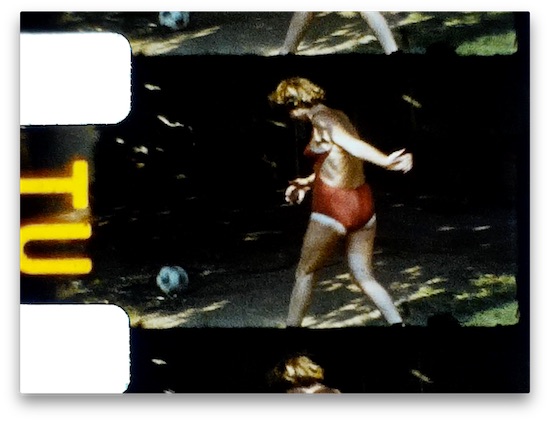
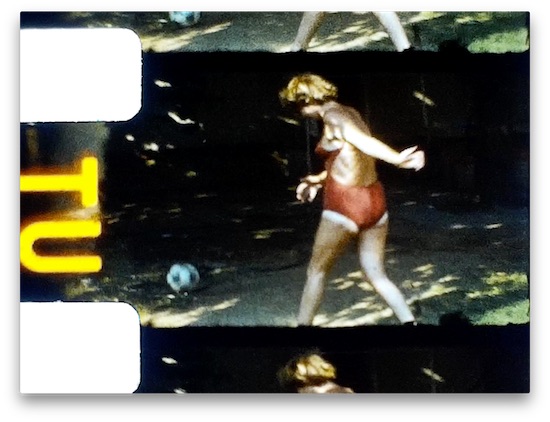
(originally under-exposed frame. As you can see, the +0.5EV shot has a LOT of additional detail simply not present in the 0EV one.)
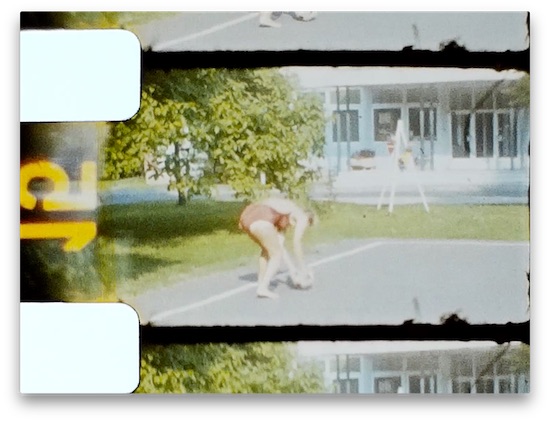
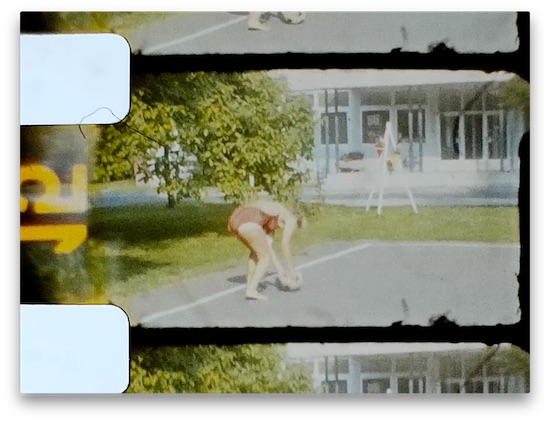
(originally over-exposed frame. As you can see, the +0.5EV shot doesn't really have burnt-out detail compared to the 0EV one.)
(All this with ORWO UT-15 footage. Interestingly, this - back in the 80's - significantly cheaper material has turned out to keep its colors sigificnatly(!) better than the other and about two times more expensive material, AgfaChrome, I used for Super-8 shooting back in time. The latter has lost its green components almost entirely in 33+ years. I've kept the films in exactly the same place. ORWO wasn't that bad a material, after all...)
All in all, in general, to make good use of the DR of the scanner, you may want to prefer a slightly positive exposure compensation, particularly if you have some originally under-exposed shots in the roll and don't want to digitize those separately. (The latter is certainly my case - I don't have the time to scan every - short - shot separately. I prefer generic, global settings.)
| IP: Logged
|
|
|
|
|
|
|
|
|
|
|
|
Werner Ruotsalainen
Film Handler
Posts: 97
From: Helsinki, Finland
Registered: Dec 2017
|
 posted January 28, 2018 05:53 AM
posted January 28, 2018 05:53 AM




This may help with the wobbling problem: I've exhibited it quite frequently lately, but mostly with Super8 films. (The vast majority of my Std8 scans have been OK. I also found out that respool the entire film reel at least once before the scan reduced the around 20-30% wobbling percentage to almost zero. Again, this is Std8 only; with Super8, this doesn't really help.)
I've played with putting clothes pegs (clothes-pins) to force down the film to the gate. At first, I've tested this setup:
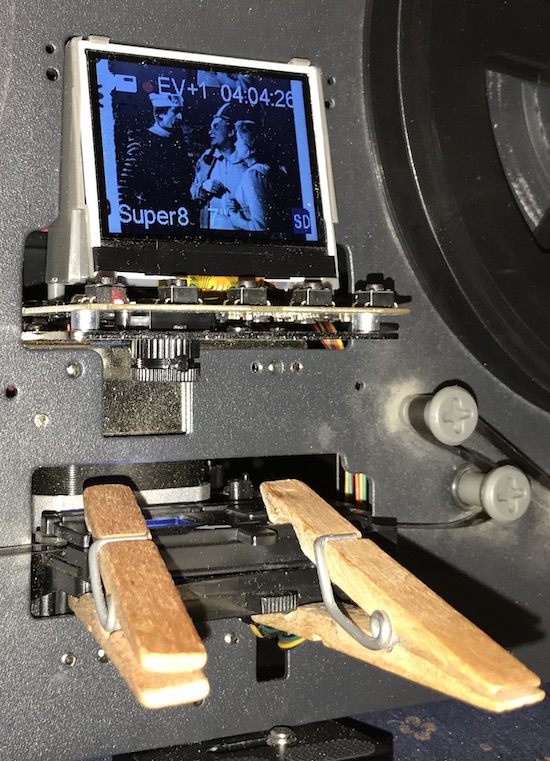
(Of course, you'll need to remove the plastic facade first to gain full access to the bottom plate of the gate. It's easy.)
With this mod, the results became pretty OK: https://www.youtube.com/watch?v=3ocj8MprCq4
NOTE:
1. the first 10-20 seconds have been taken without the clips applied. This is why they are super-wobbly there.
2. this is the East-German DEFA Super8 mm version of Rumpelstiltskin. The full documentation of what's happening in this film version (in German) is at https://www.flickr.com/photos/33448355@N07/39034875115/in/album-72157692569177485/ (see the right page; the left one is just a generic overview of the then-available DEFA films) and https://www.flickr.com/photos/33448355@N07/39034873185/in/album-72157692569177485/
Then, for the second half of the scan, I've removed the right clip, only keeping the left one. This has further helped, which could also be heard right away. (The clicks became much louder and more defined - almost as loud as with Std8 films.) The footage is here (the first seconds wobble as I still played with the clips then.): https://www.youtube.com/watch?v=YYI-BXx3MDw
This trick may also help you if you encounter the same wobbling.
| IP: Logged
|
|
|
|
Werner Ruotsalainen
Film Handler
Posts: 97
From: Helsinki, Finland
Registered: Dec 2017
|
 posted February 03, 2018 09:40 AM
posted February 03, 2018 09:40 AM




And still modtime...
1, I've found out that, over time, the upper spring-loaded gate becomes so weak that the take-up wheel has a really destructive effect on the scanning, resulting in a lot of wobbling. My solution is simple: I just block the take-up wheel with a pen and let the film fall on the floor. From time to time, I remove the pen so that I can spool the film on the wheel:
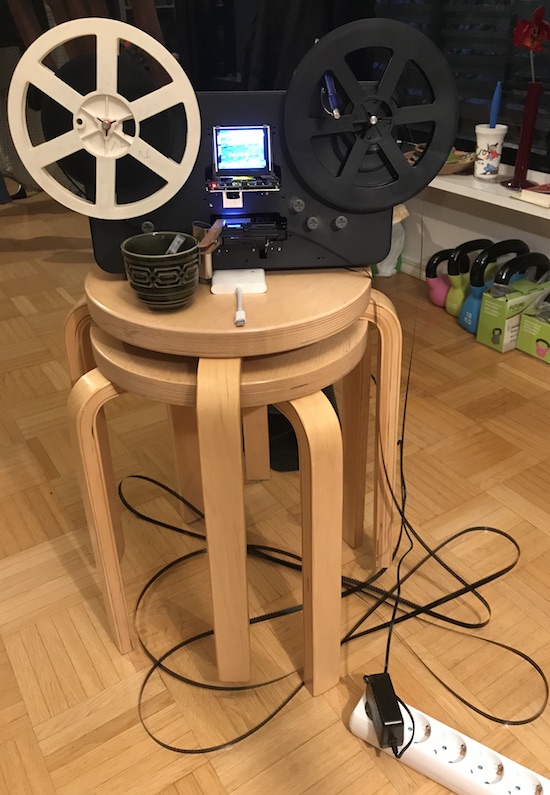
The image also shows a clip on the left side of the gate and also a slight push on the film backwards where it enters the gate to further minimize horizontal "dancing".
2. WRT the Standard-8 (double-8) problem I explained above: turns out (see the review starting with "Beware that you may need to "modify" the track" at https://www.bhphotovideo.com/c/product/1371442-REG/wolverine_data_f2dmmpro_moviemaker_pro_8mm_and_super_8.html ) others have had exactly the same problem, and the manufacturer even told them to use a knife to widen the track. Or, to send the entire(!) machine and a "sticky" film back to them so that they widen the track (for a fee).
(Now I wonder why the manufacturer didn't bother answering my mail, which I sent them some 6 weeks ago, asking for (not for free!) an already-modded gate...)
| IP: Logged
|
|
|
|
Werner Ruotsalainen
Film Handler
Posts: 97
From: Helsinki, Finland
Registered: Dec 2017
|
 posted February 04, 2018 02:01 AM
posted February 04, 2018 02:01 AM




Yup - I'm thinking of soldering in an on/off switch to easily start/stop the take-up reel. Otherwise, when I can't block the movement any more (the reel has a lot of film so I can't insert a pen in there any more), I just take it off and only put back when I'm around and can spool the film.
BTW, so far, elminating the take up wheel's effect has worked great. About half of my S8 reels exhibit absolutely no wobbling right at the first scan; the other half in the second. Just an example of a scan done this way:
https://www.youtube.com/watch?v=RyzXn1N6o_k
(East-Romania, 1981?; S8 Kodachrome; 12:30 minutes. Directly the scanner's output - no stabilization, no nothing, with as much overscan as possible (w=0).)
https://www.youtube.com/watch?v=mzicVCuHR7Y
(Czehoslovakia + Germany + France, 1975; 16:51; S8 Kodachrome. See the video description for some of the sights.)
[ February 04, 2018, 07:10 AM: Message edited by: Werner Ruotsalainen ]
| IP: Logged
|
|
|
|
|
|
|



 UBBFriend: Email this page to someone!
UBBFriend: Email this page to someone!
 Printer-friendly view of this topic
Printer-friendly view of this topic





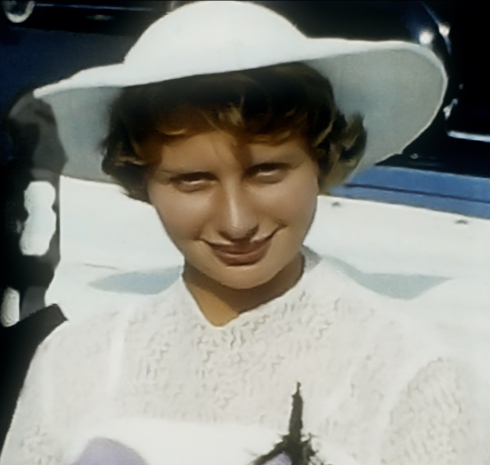
![[Wink]](wink.gif)
![[Confused]](confused.gif)





